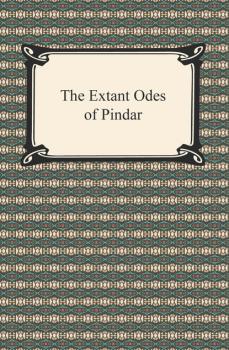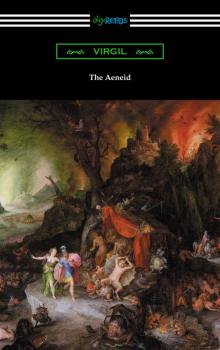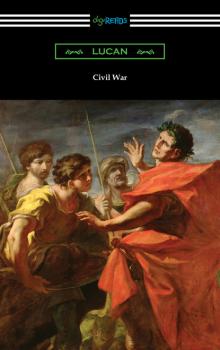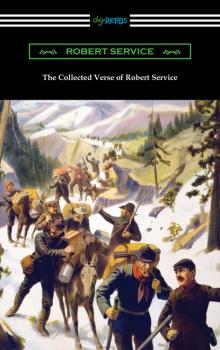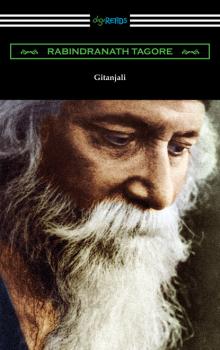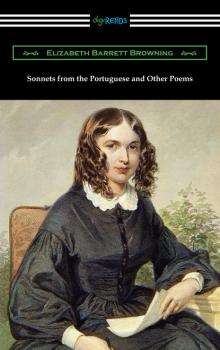ТОП просматриваемых книг сайта:
Зарубежные стихи
Различные книги в жанре Зарубежные стихи, доступные для чтения и скачиванияАннотация
This collection of extant odes by the Greek poet Pindar (c. 581-438 BC) presents a comprehensive look at the odes that define his poetic career. Along with Sappho, Pindar is one of the esteemed nine lyric poets of Ancient Greece. These extant odes are also representative of Greece's cultural and artistic trends at the beginning of the dynamic classical period (5th cen. – 4th cen. BC). Primarily in the mode of his famed victory odes, or «epikinia», Pindar elevates the legends of various athletic victors. From charioteers to wrestlers, these poems are frank yet powerful accounts of Ancient Greece's most harrowing Olympic events. Pindar's poetic style is particularly striking, often employing grandiosity unheard in his contemporaries' verse. His elegant phrasing and exacting imagery make these odes delightfully arresting. These games provide an opportunity for mortal men to be elevated to divine status; and it is these odes that so effortlessly set these transformations into action.
The Aeneid (Translated into English Verse by John Dryden with an Introduction by Harry Burton) - Virgil
Аннотация
“The Aeneid” is considered by some to be one of the most important epic poems of all time. The story is as much one of the great epic hero, Aeneas, as it is of the foundation of the Roman Empire. Aeneas, a Trojan Prince who escapes after the fall of troy, travels to Italy to lay the foundations for what would become the great Roman Empire. Virgil’s “Aeneid” is a story of great adventure, war, love, and of the exploits of an epic hero. In the work Virgil makes his commentary on the state of Rome during the Rule of Augustus. It was a time that had been previously ravaged by civil wars and with the reign of Augustus order and peace had begun to be restored. That order had a price though. Many of the freedoms of the old Roman Republic had been lost under the new Imperialistic Rome. This loss of freedom and the debate over the virtues of a Roman Republic versus an Imperialistic Rome was central to Virgil’s time and is interwoven throughout the poetic narrative of “The Aeneid.” Virgil’s work forms the historical foundation for the argument of the empire over the republic as the best form of government. This edition is translated into English verse by John Dryden and includes an introduction by Harry Burton.
Аннотация
The great Roman poet Lucan is considered one of the most important Latin Poets of all time. His masterful epic “Pharsalia”, or “Civil War” chronicles the dynamic battle between Julius Caesar and Pompey the Great. The Great Civil War led to the downfall of the Roman Republic and the establishment of the Roman Empire. “Civil War” is divided into ten books, tracking Caesar’s march to Rome, through Spain, and finally to Egypt. The cast of characters is wide: Brutus, Cicero, and Cleopatra all have parts, creating a singular epic. The poem is rooted in history though Lucan uses his poetic gift to create a work of literature that is as symbolic and moving as it is informative. Lucan’s clear and energetic verse brings one of the most important wars in history to life. The cruel and exacting Caesar is witnessed here like nowhere else in literature. Civil War brilliantly comments on violence, politics, and sacrifice. For the student of Roman history and the lover of epic poetry, Lucan’s “Civil War” is not to be missed.
Аннотация
Alfred Edward Housman was an English poet and classical scholar whose work became a major force in turn of the century English poetry. Unlike his contemporaries, Housman’s poetry does not qualify as Romantic, Victorian, or Modernist, and is not overly sentimental or optimistic; instead, his deeply pessimistic and ironic poetry, written clearly and succinctly, earned Housman recognition as one of the foremost classicists of his time. His best-known work, “A Shropshire Lad”, is a cycle of 63 poems set in a half-imaginative Shropshire, and explores themes of death, the fleetingness of love, and the passing of youth. The poems became increasingly popular at the time of World War I because of their depiction of brave English soldiers. In the early 1920s, Housman’s closest friend and old Oxford roommate, Moses Jackson, was dying, prompting Housman to compile his “Last Poems” for Jackson to read. The forty-one previously unpublished poems were so titled because Housman felt his inspiration had been exhausted. These two volumes are combined together here in this representative collection of Housman’s works.
Аннотация
Robert Service dreamed of a life of adventure and freedom to live and write as he wanted, surrounded by nature and the beauty of the world. Born in Lancashire, England, he developed an urge early on to travel abroad, and set his sights on the rough and tumble “wild west” of Canada. Part journalist and part storyteller, he ventured up and down the west coast of the United States and wrote romantic stories of cowboys, gold prospectors, and characters of the lush, wild backwoods. This collection of verse contains Service’s famous poetry collections “Songs of a Sourdough”, published in 1907 to wide success, “Ballads of a Cheechako”, “Rhymes of a Rolling Stone”, “Rhymes of a Red Cross Man”, and “Ballads of a Bohemian”. Service favored simple, rhythmic ballads that allowed the reader to get lost in the colorful descriptions and exciting tales of his imagination, which were inspired by his real world experiences.
Аннотация
One of Hilaire Belloc’s most famous works, “Cautionary Tales for Children” satirizes a genre of admonitory children’s literature popular in England in the 19th century. The seven stories contained in this work are macabre parodies of childhood lessons, and will entertain more sophisticated readers who can appreciate these tales of disproportionate punishment. Presented in a classic picture book style, Belloc has captured the foibles of children like Jim, who let go of his nurse’s hand and was eaten by a lion; Matilda, who told lies, and was burned to death; and Henry King who swallowed string. The consequences range from naughty children being whimsically eaten by lions, to stern reprimands for a boy who fires a loaded gun at his sister. Originally written nearly a century ago, Belloc’s sprightly verses are a quick and cathartic read which reflects upon a trend in children’s literature from yesteryear.
Аннотация
Initially conceived after reading the works of Henry Rowe Schoolcraft, who was known for his early studies of Native American culture, “The Song of Hiawatha” by Henry Wadsworth Longfellow is an epic poem based on the legends of the Ojibwa Indians of Michigan, Wisconsin, and Minnesota. Written in 1855 in trochaic tetrameter, the tale is set in the picturesque Pictured Rocks area along the south shore of Lake Superior. The lyrical descriptions of this beautiful and unique part of the United States are intertwined with the story of the Native American warrior Hiawatha and his love for the Dakota woman, Minnehaha. From Hiawatha’s youth to his marriage, from his daily existence of gathering food to his participation in the traditions of his people, Longfellow weaves a tale of impressive scope in this epic work. Longfellow combines the mythological and cultural traditions of the Native American people with a timeless and universally human tale of love and loss. Ultimately, this poem tells the story of the American Indian, including the rhythm of their daily life, their fight for survival, and the gradual disappearance of their culture and way of life with the arrival of white men and Christianity. This edition includes a biographical afterword.
Аннотация
First published in English in 1912, “Gitanjali”, or “Song Offerings”, is a collection of poems translated by the author, Rabindranath Tagore, from the original Bengali. It contains over 100 inspirational poems by India’s greatest poet and earned Tagore the Nobel Prize for Literature in 1913. Tagore, known as the “Bard of Bengal”, was born in 1861 to a wealthy family and started writing poetry as a child and began publishing critically acclaimed verses as a teenager. Tagore went on to write novels, stories, and dramas, work which would reshape Bengali literature and culture. He first published the “Gitanjali” collection of poems, widely considered to be one of his best works, in his native Bengali language in 1911. The original Bengali version contained over 150 verses and many were combined or edited out when Tagore translated them into English. Deeply spiritual and devotional, Tagore’s poems are primarily concerned with love and the conflict between earthly desires and spiritual passions and longings. Tagore also spoke eloquently and movingly of his connection to the natural world. This volume includes the introduction by William Butler Yeats that accompanied the original 1912 English language version. This edition includes a biographical afterword.
Аннотация
“The New Life” or “La Vita Nuova” is the first of two collections of verse and prose written by the Italian poet, Dante Alighieri. Since the Middle Ages, Dante has been cherished as the “Supreme Poet” of Italy, and is most widely recognized for his allegorical masterpiece “The Divine Comedy”. “The New Life” contains works written over a period of ten years, from before 1283 to roughly 1293, and is the semi-autobiographical account of Dante’s lifelong love for a woman he called Beatrice. It explores the emotions of courtly love, its powerful ability to inspire, and Dante’s affirmations of his own religious convictions. The piece transformed European vernacular poetry, and established the Tuscan dialect in which it is written as the Italian standard. Today it is not only enjoyed for its imaginative and sensitive love story, but also for its exploration of poetry and religious experience, and the overarching connection between them all.
Аннотация
Written between 1845 and 1846 and first published in 1850, “Sonnets from the Portuguese” is a series of love poems written by the English poet Elizabeth Barrett Browning to her husband, the famous English poet and playwright, Robert Browning, which was critically acclaimed and instantly popular upon its publication and has remained so to this day. Referring to her olive-skinned complexion, Robert called his wife “his little Portuguese”. It is from this nickname that the title “Sonnets from the Portuguese” is derived. The untitled and numbered sonnets were originally written as private verses of love during the early years of their marriage and Elizabeth never intended to publish them until encouraged to do so by her husband. The result is a collection of some of the loveliest and most poignant words written on romance and marriage in all of English poetry. Perhaps the most famous of her verses is the beautiful “How do I love thee? Let me count the ways”, which is a timeless statement of love and devotion. All together in this representative selection are included a total of eighty-three works which exhibit the breadth of Elizabeth Barrett Browning’s poetic virtuosity.

